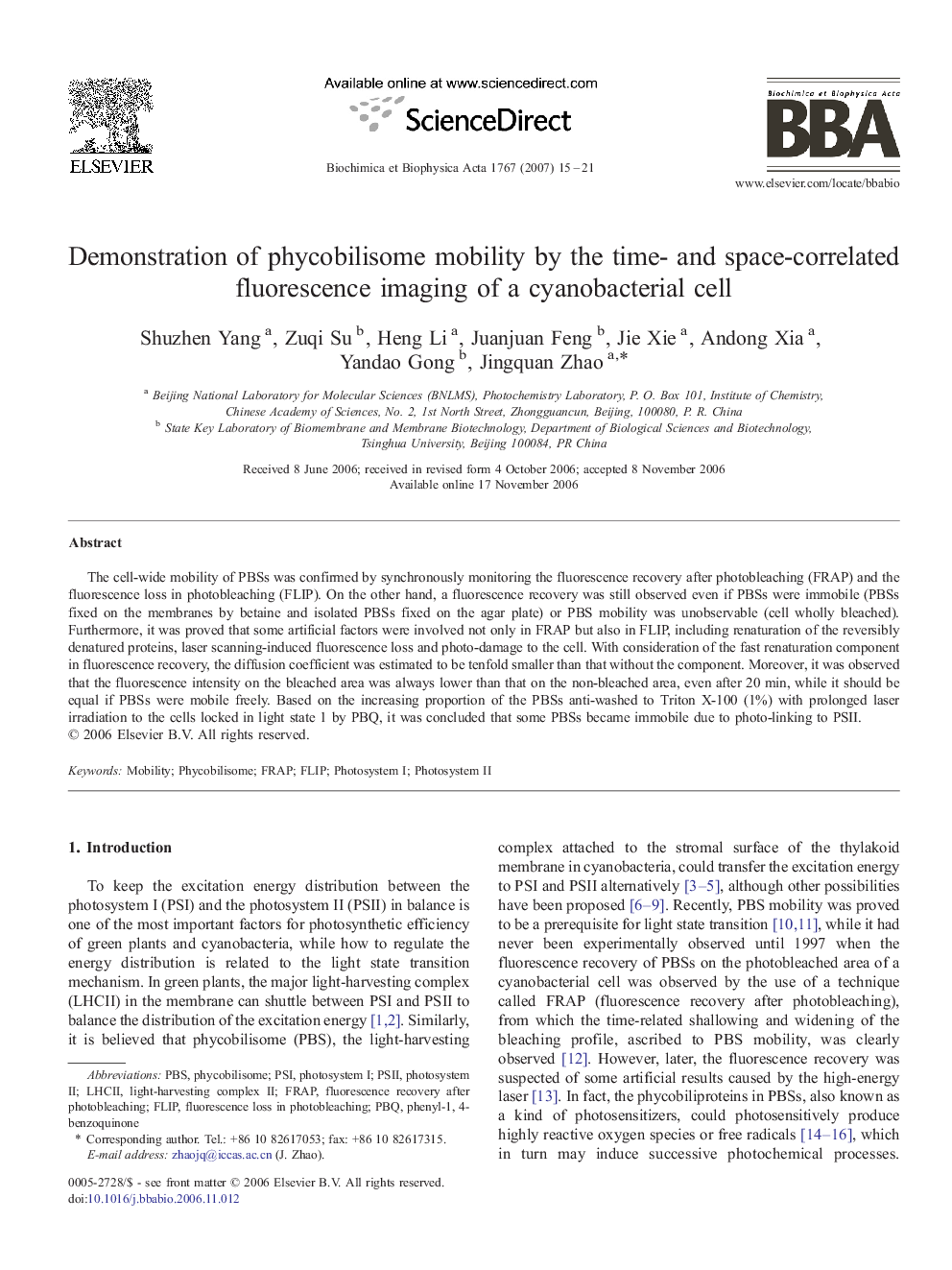| Article ID | Journal | Published Year | Pages | File Type |
|---|---|---|---|---|
| 1943636 | Biochimica et Biophysica Acta (BBA) - Bioenergetics | 2007 | 7 Pages |
The cell-wide mobility of PBSs was confirmed by synchronously monitoring the fluorescence recovery after photobleaching (FRAP) and the fluorescence loss in photobleaching (FLIP). On the other hand, a fluorescence recovery was still observed even if PBSs were immobile (PBSs fixed on the membranes by betaine and isolated PBSs fixed on the agar plate) or PBS mobility was unobservable (cell wholly bleached). Furthermore, it was proved that some artificial factors were involved not only in FRAP but also in FLIP, including renaturation of the reversibly denatured proteins, laser scanning-induced fluorescence loss and photo-damage to the cell. With consideration of the fast renaturation component in fluorescence recovery, the diffusion coefficient was estimated to be tenfold smaller than that without the component. Moreover, it was observed that the fluorescence intensity on the bleached area was always lower than that on the non-bleached area, even after 20 min, while it should be equal if PBSs were mobile freely. Based on the increasing proportion of the PBSs anti-washed to Triton X-100 (1%) with prolonged laser irradiation to the cells locked in light state 1 by PBQ, it was concluded that some PBSs became immobile due to photo-linking to PSII.
